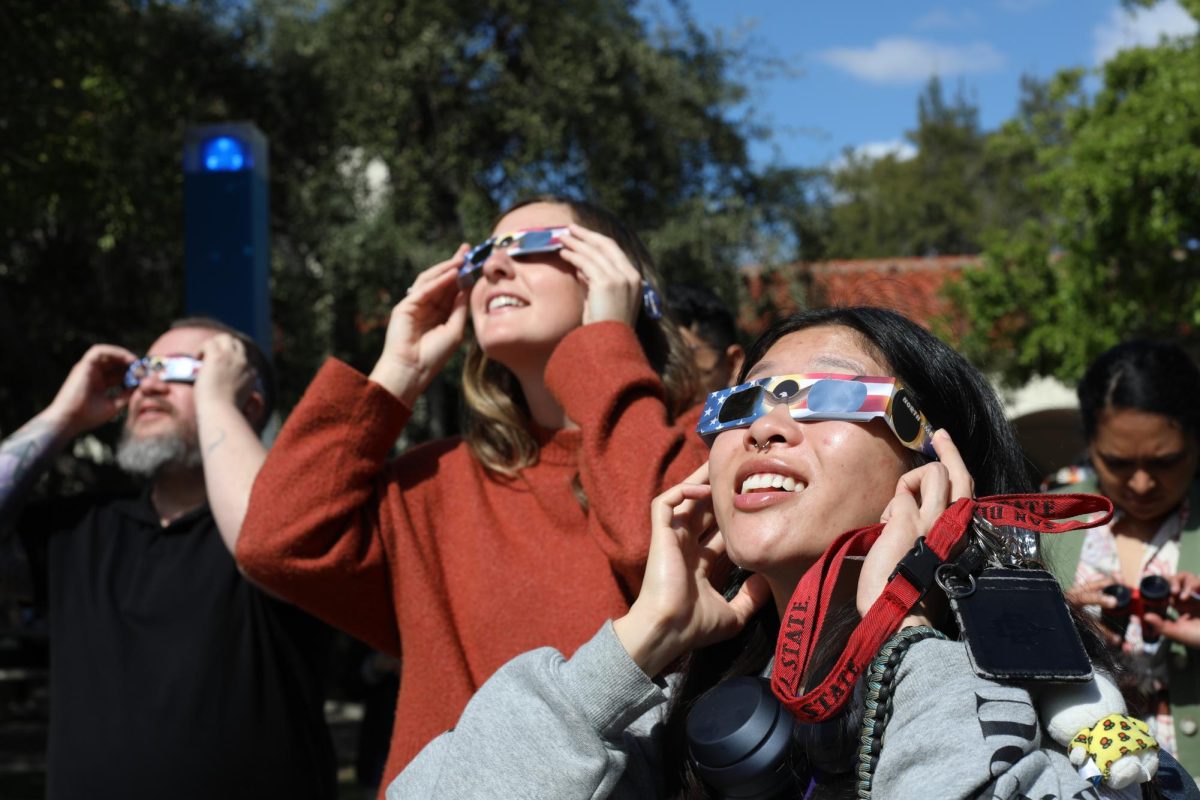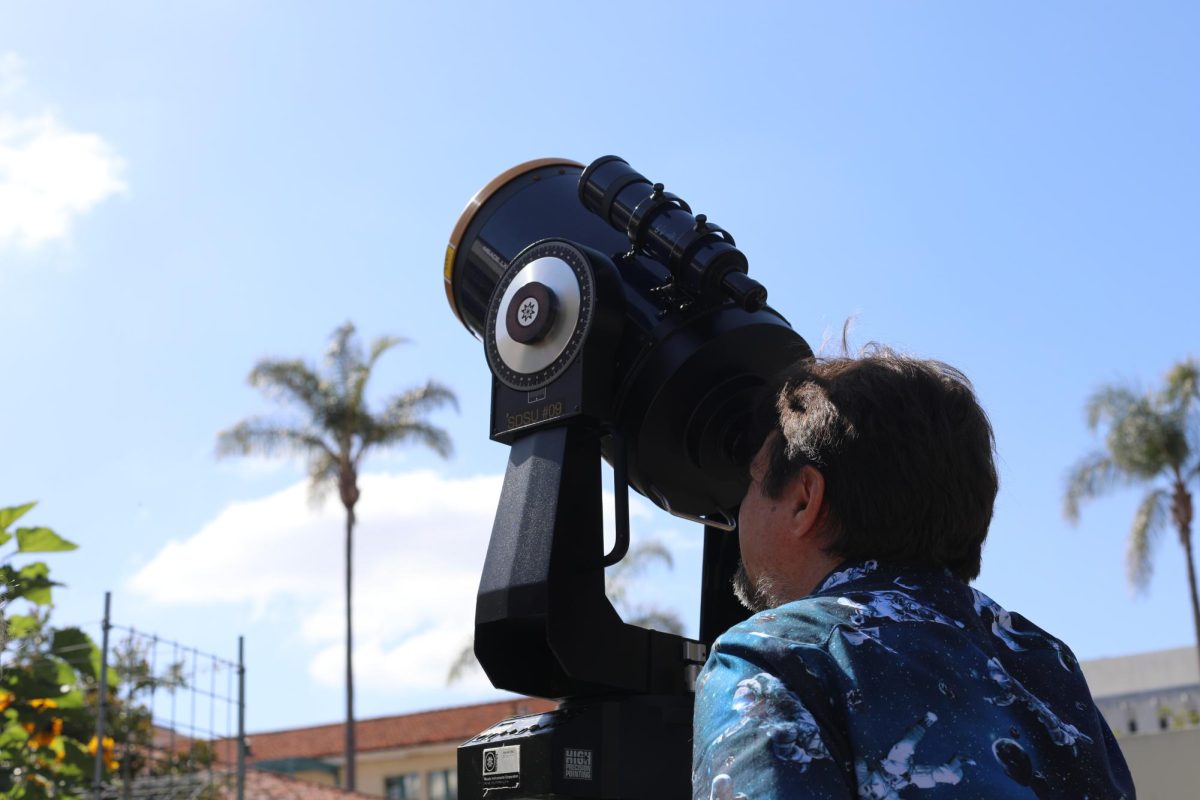On April 8, the air bubbled with excitement around the Mediterranean gardens at San Diego State University as students woke up early — even with some missing their classes — to experience a rare spectacle in the sky: the solar eclipse.
While San Diego was not in the path of totality — the area where viewers could see the sun fully covered by the moon — that didn’t stop astronomy students and professors from lugging out their telescopes. By hosting a watch party for students, staff and faculty alike came together to enjoy the rare view in one place.
The SDSU Schwartz Astronomical Society members hosted this viewing party and were excited to share their love for astronomy with many other students.
“It’s awesome to see SDSU students take an interest in astronomy at a time like this,” said third-year astronomy student, Isaiah Kayle Tallod, the president of the SDSU Schwartz Astronomical Society chapter.
In San Diego, the eclipse peaked at 11:11 a.m., with the moon covering about 60% of the sun.
Members of the club, as well as astronomy students, gave out eclipse glasses and polarizing binoculars and brought their mounted telescopes to ensure students protected their eyes adequately.
According to Tallod, the eclipse glasses blocked approximately 95% of the sun’s light, so that people could look right at the blaring light.
Astronomy professor, Jerry Orosz, delegated the students who lined up to look through his 8-inch reflecting telescope with a “special” polarizer at the top.
While others came just to enjoy the camaraderie, astronomy students were fascinated. Whether students planned to attend the watch party or just passed through on their way to class, everyone was captivated for a few moments.
According to NASA, this eclipse differed from the 2017 eclipse for a few reasons.
Firstly, the path of totality was much wider, meaning the eclipse covered more ground. In 2017, the path of totality ranged from 62-71 miles wide, and this eclipse ranged from 108-122 miles wide.
This eclipse lasted twice as long as the 2017 eclipse. This one was at full capacity for 4 minutes and 28 seconds while the 2017 eclipse was at full capacity for 2 minutes and 42 seconds.
Landon Mayta, a fourth-year astronomy student, mentioned it’s interesting that the moon can cover the sun even though its sizes are drastically different.
“Anytime we can see something like this, it gives insight into what’s going on above us so I think it’s really fun,” Mayta said.












